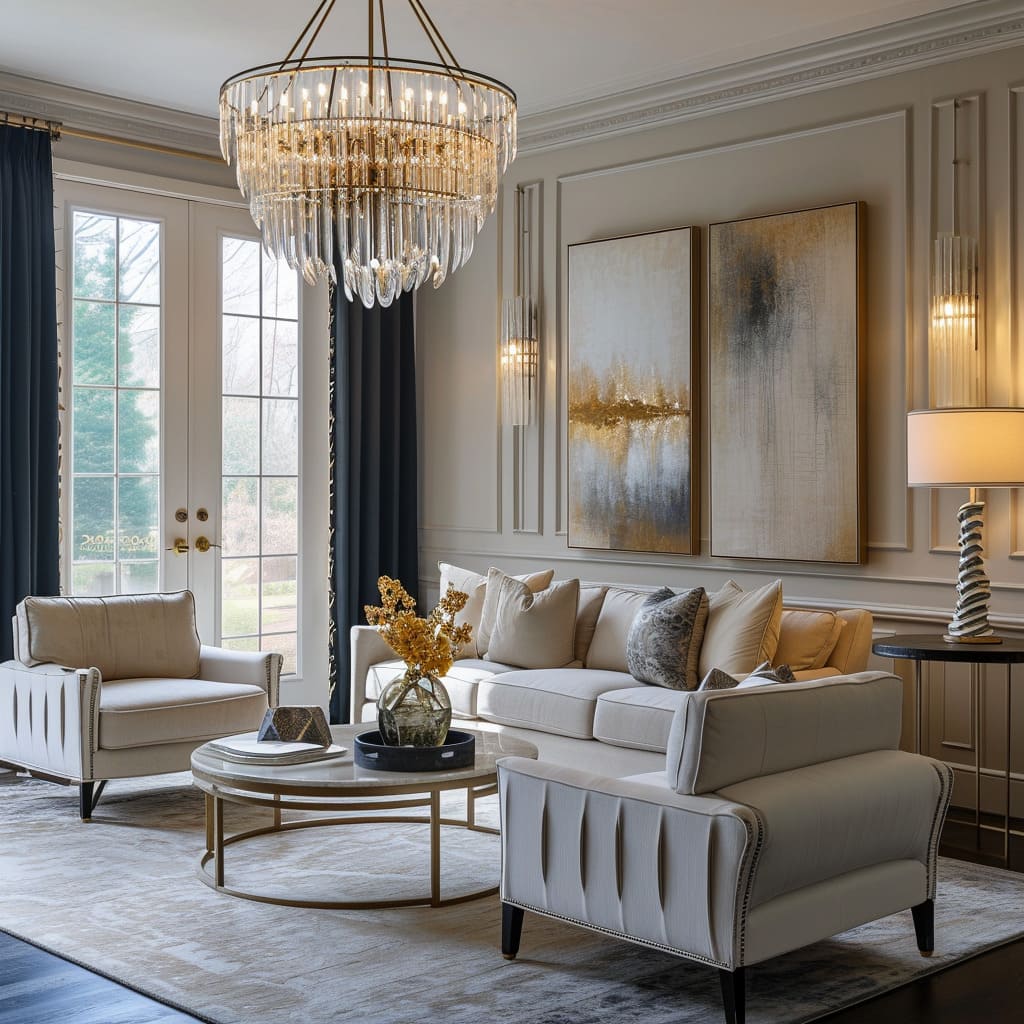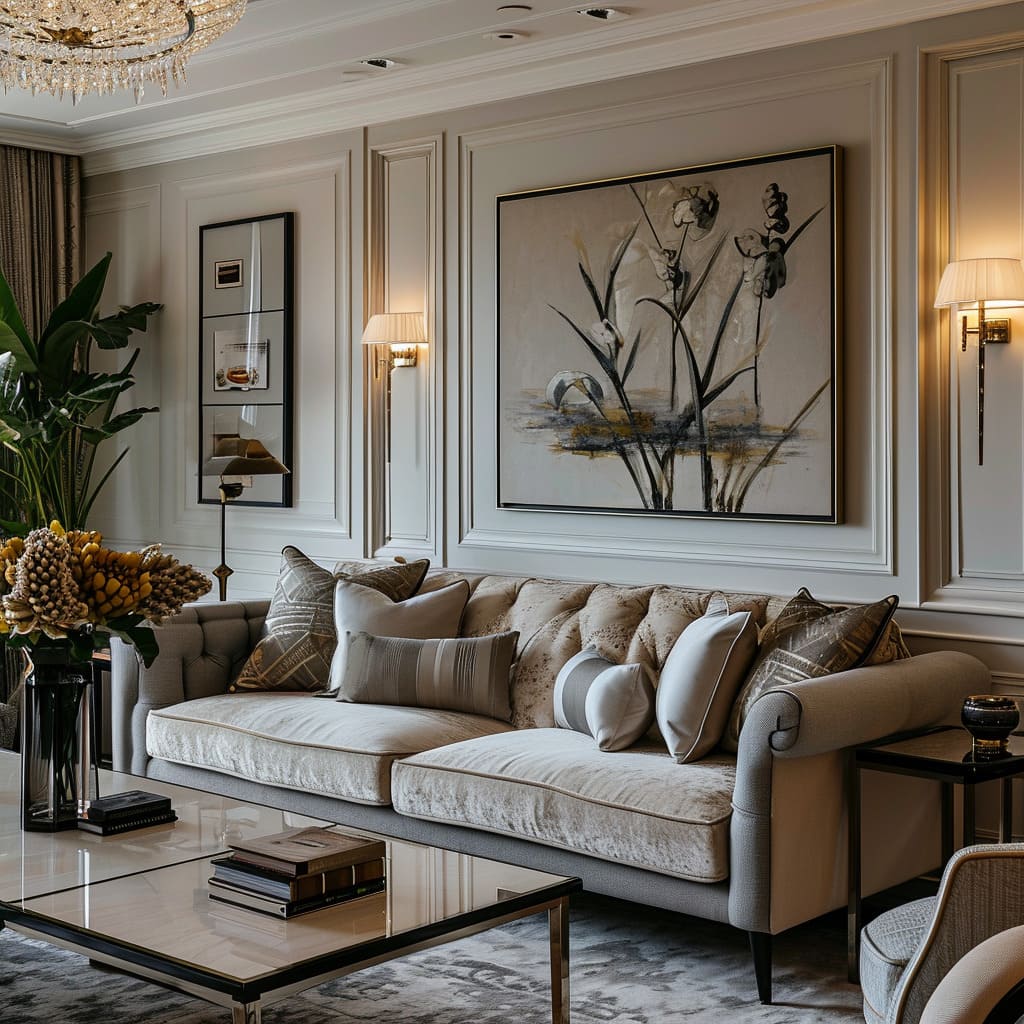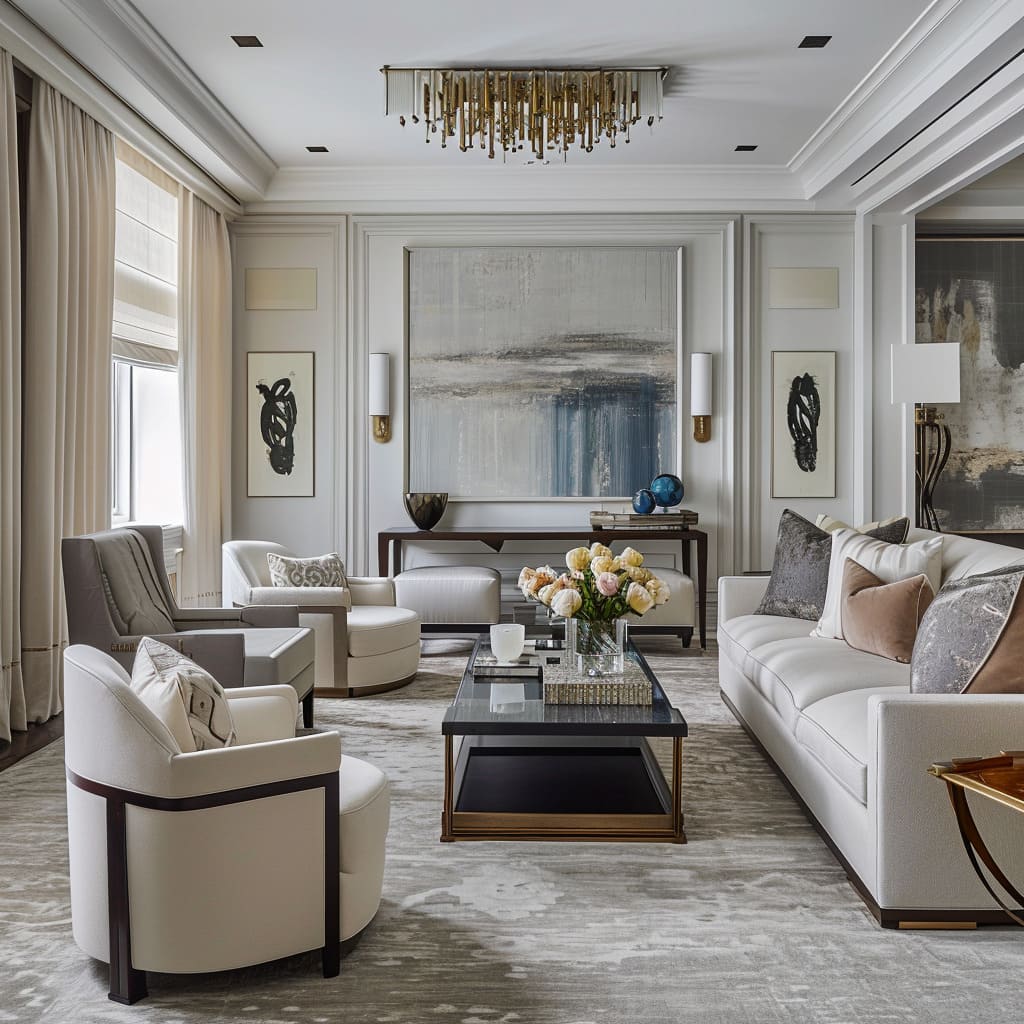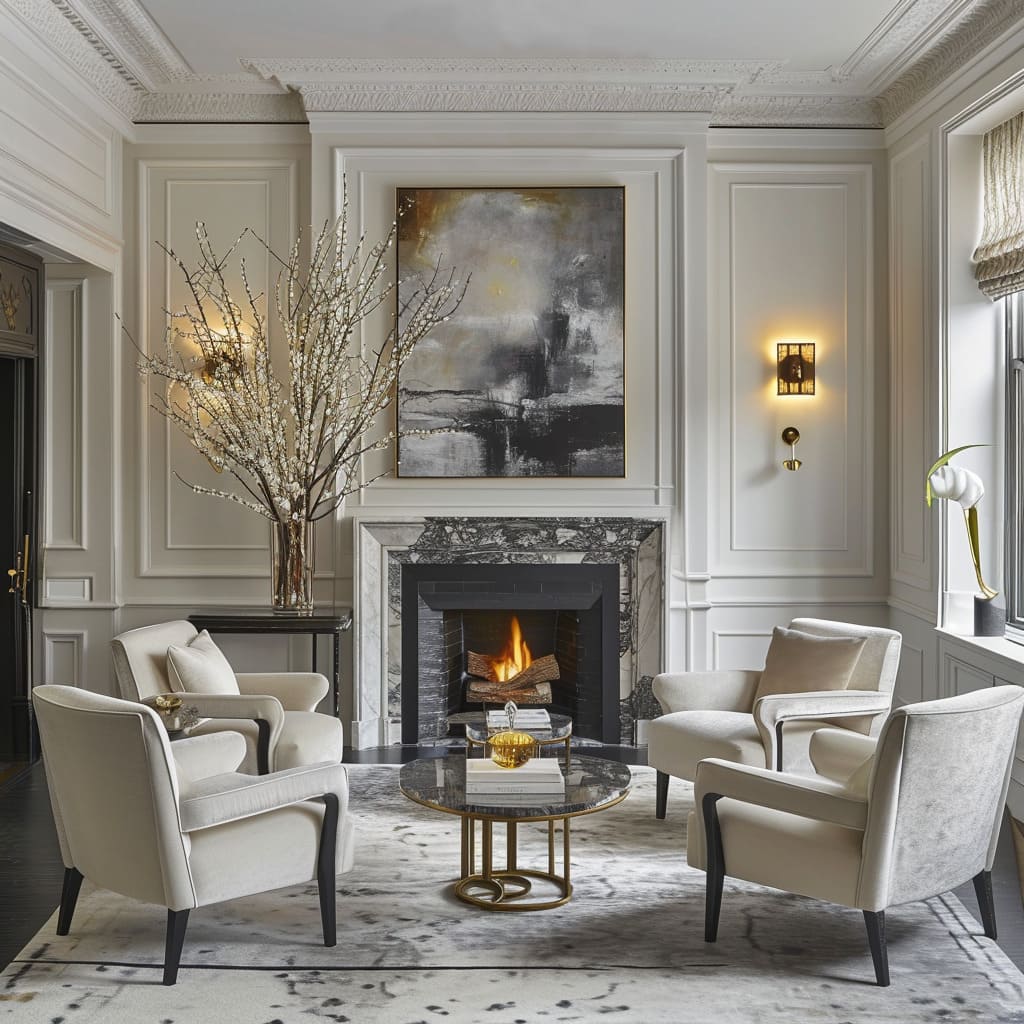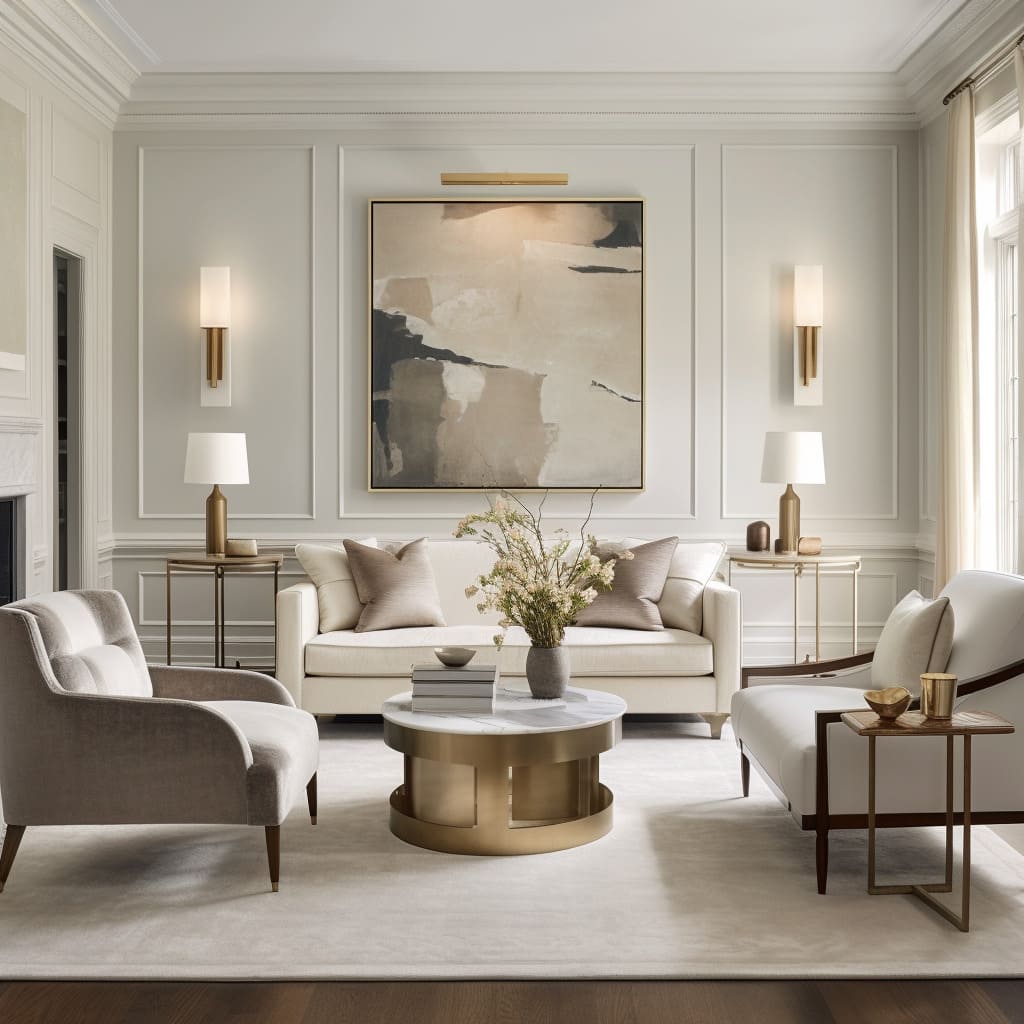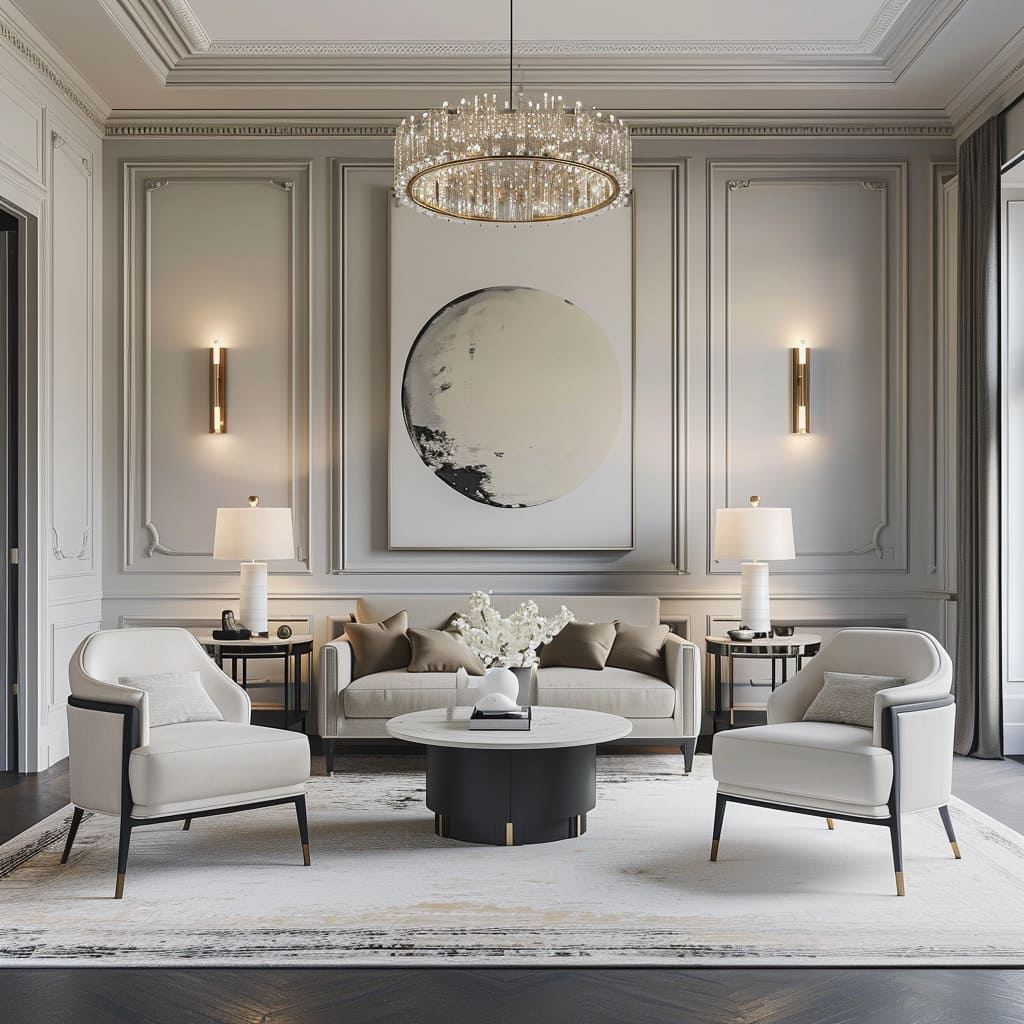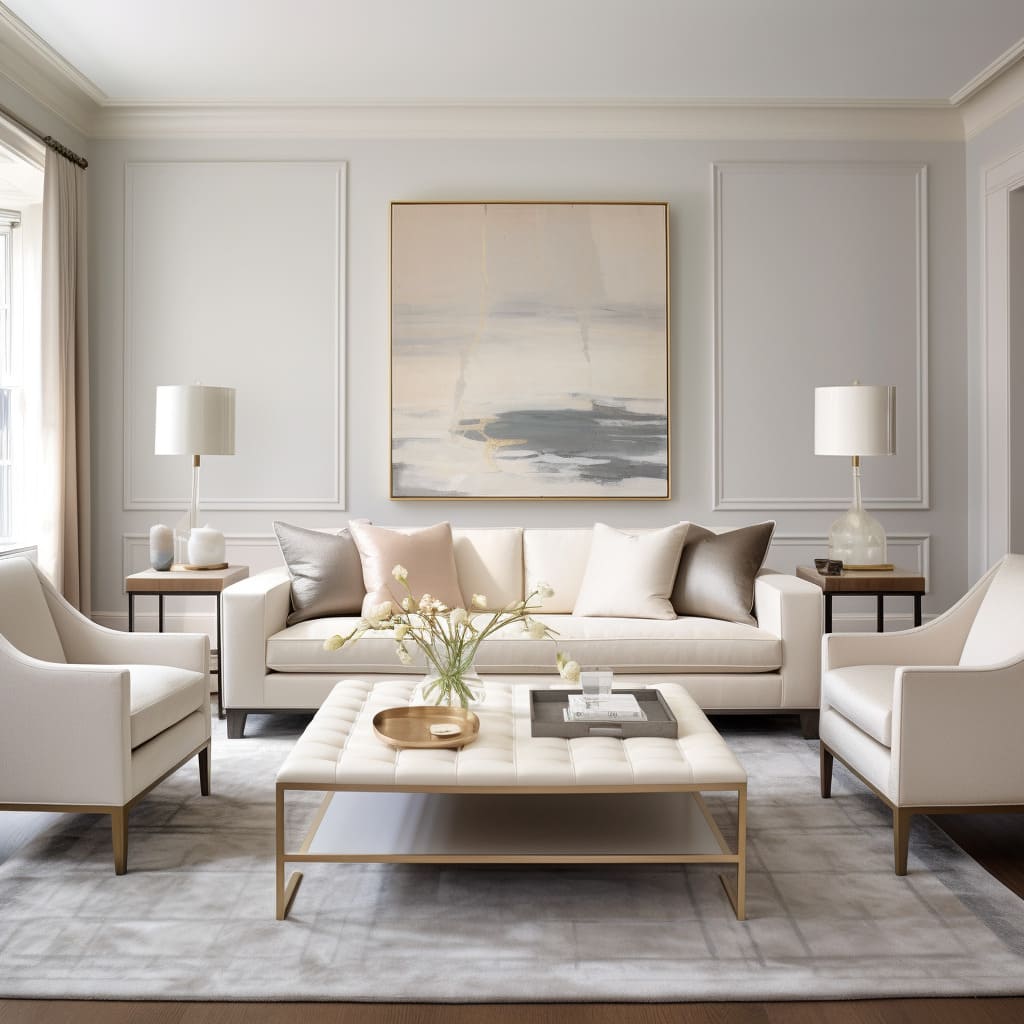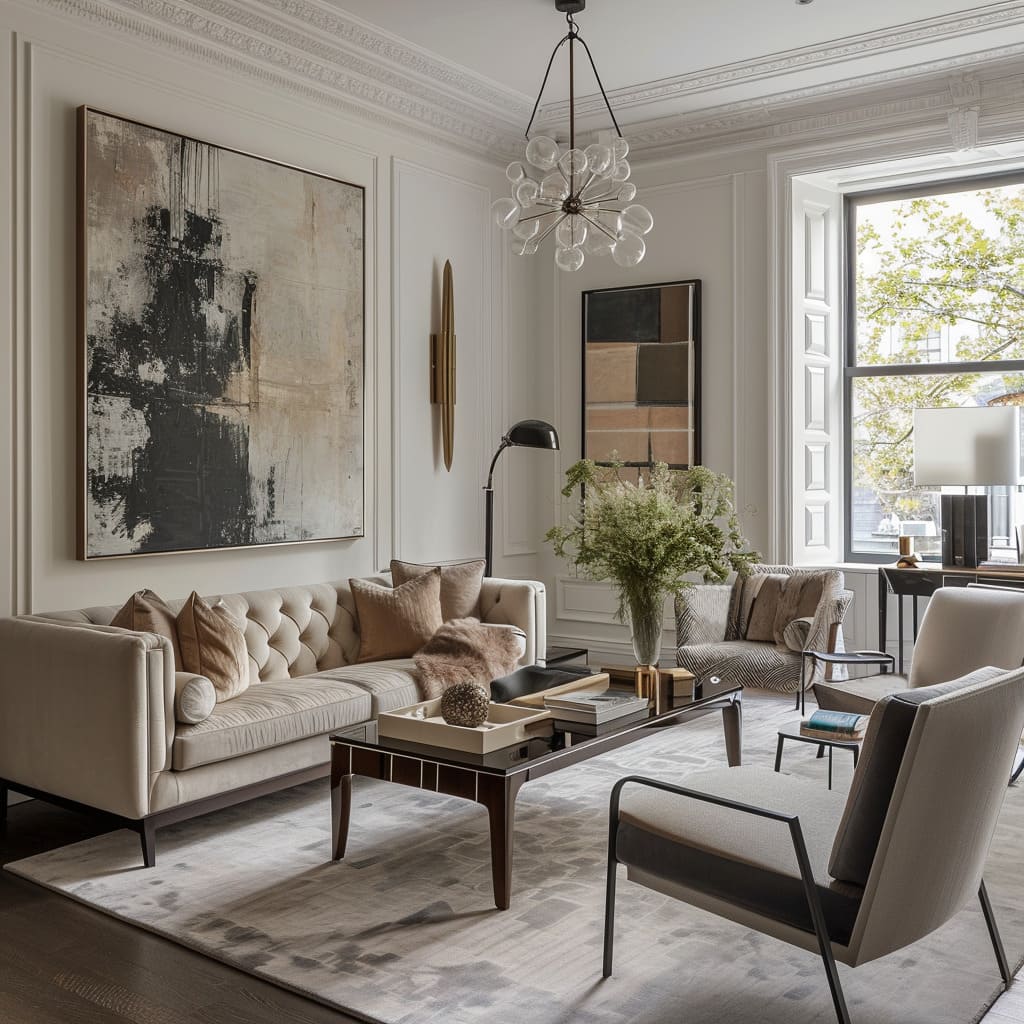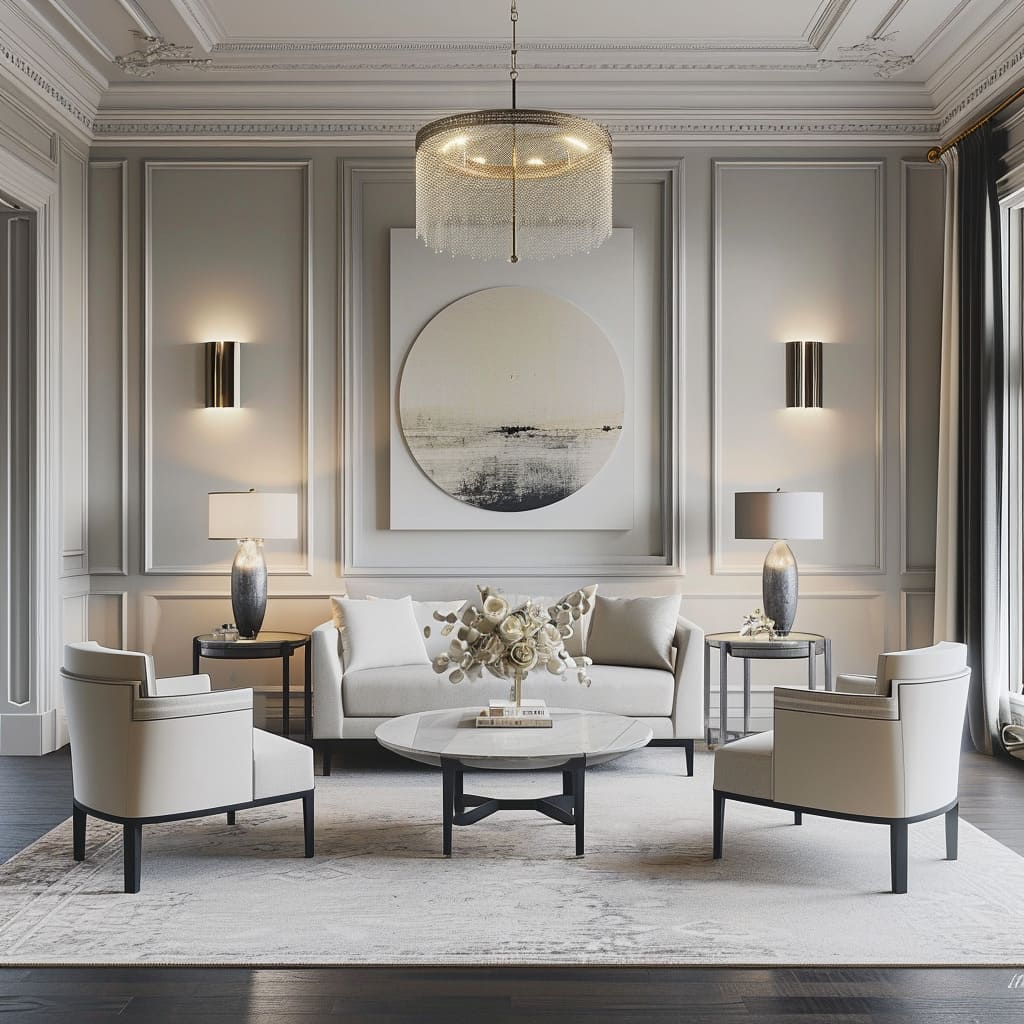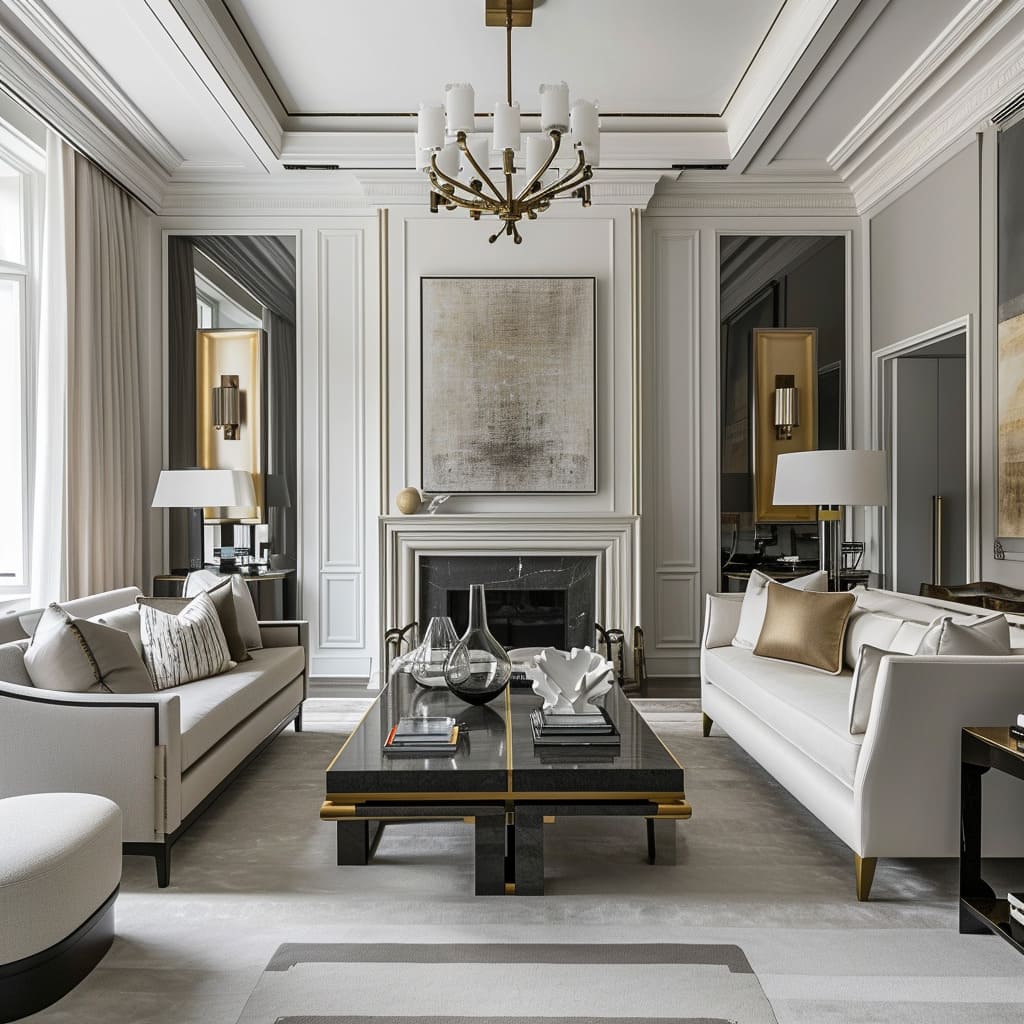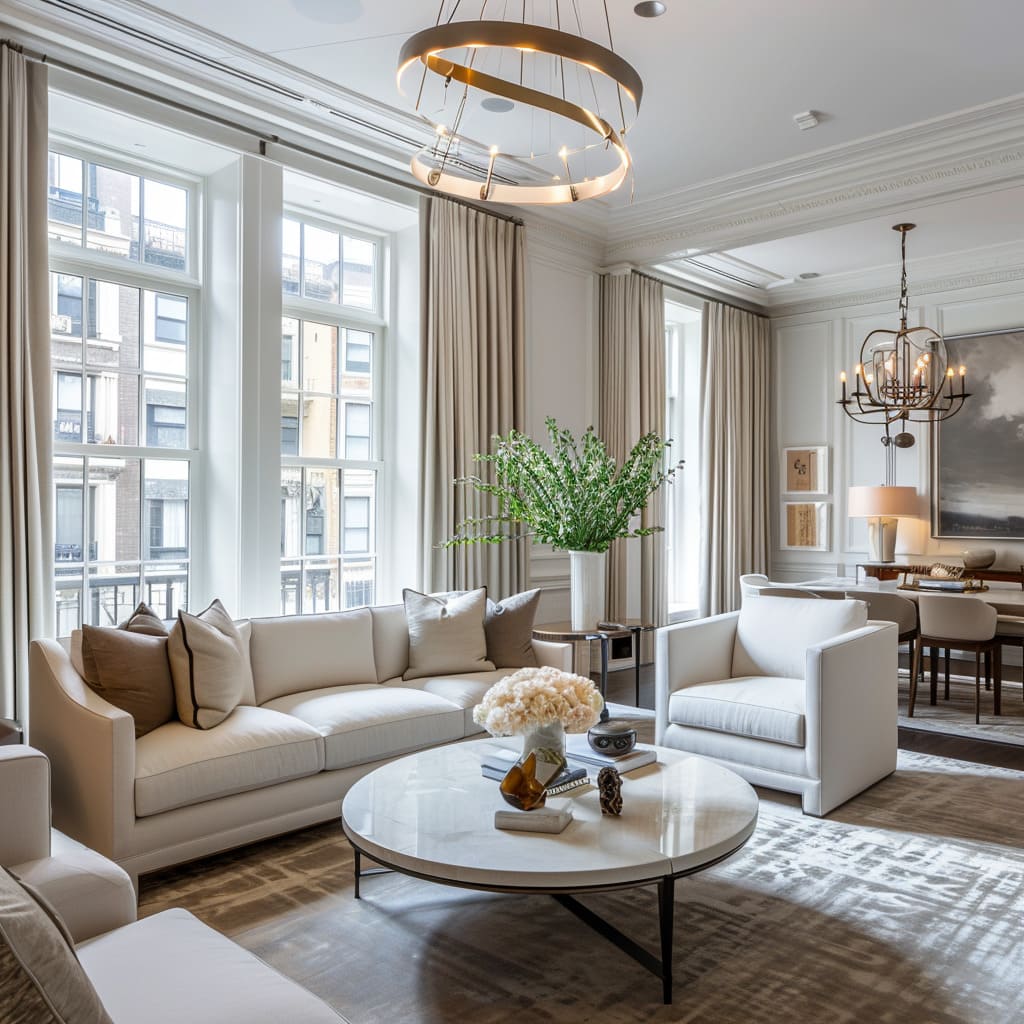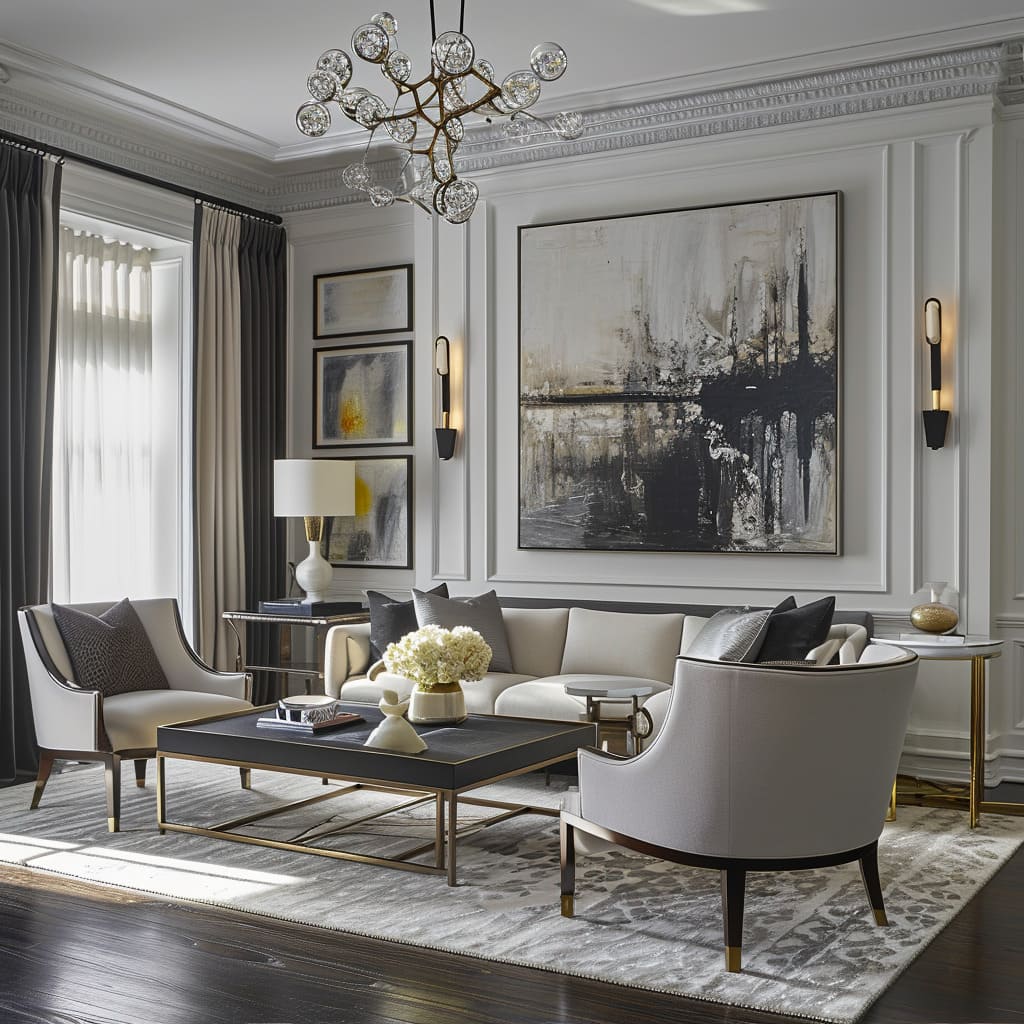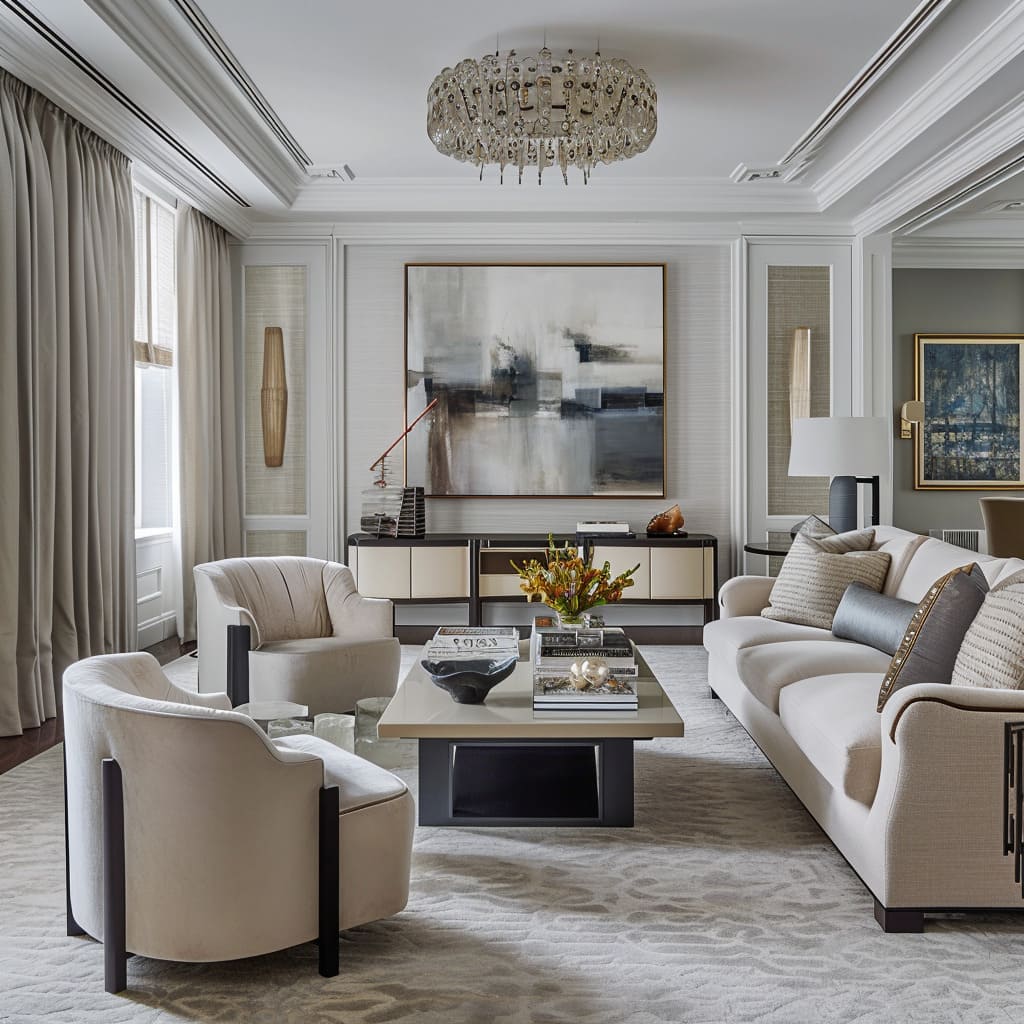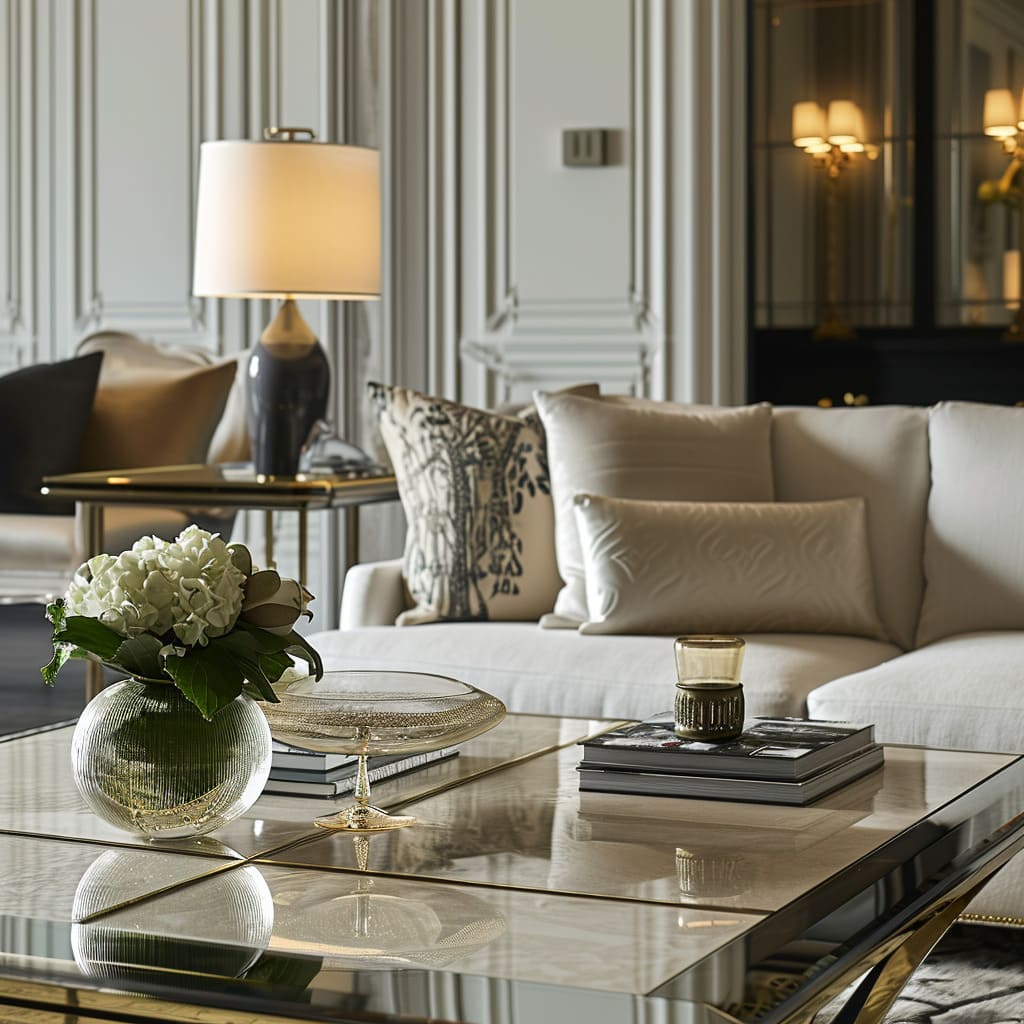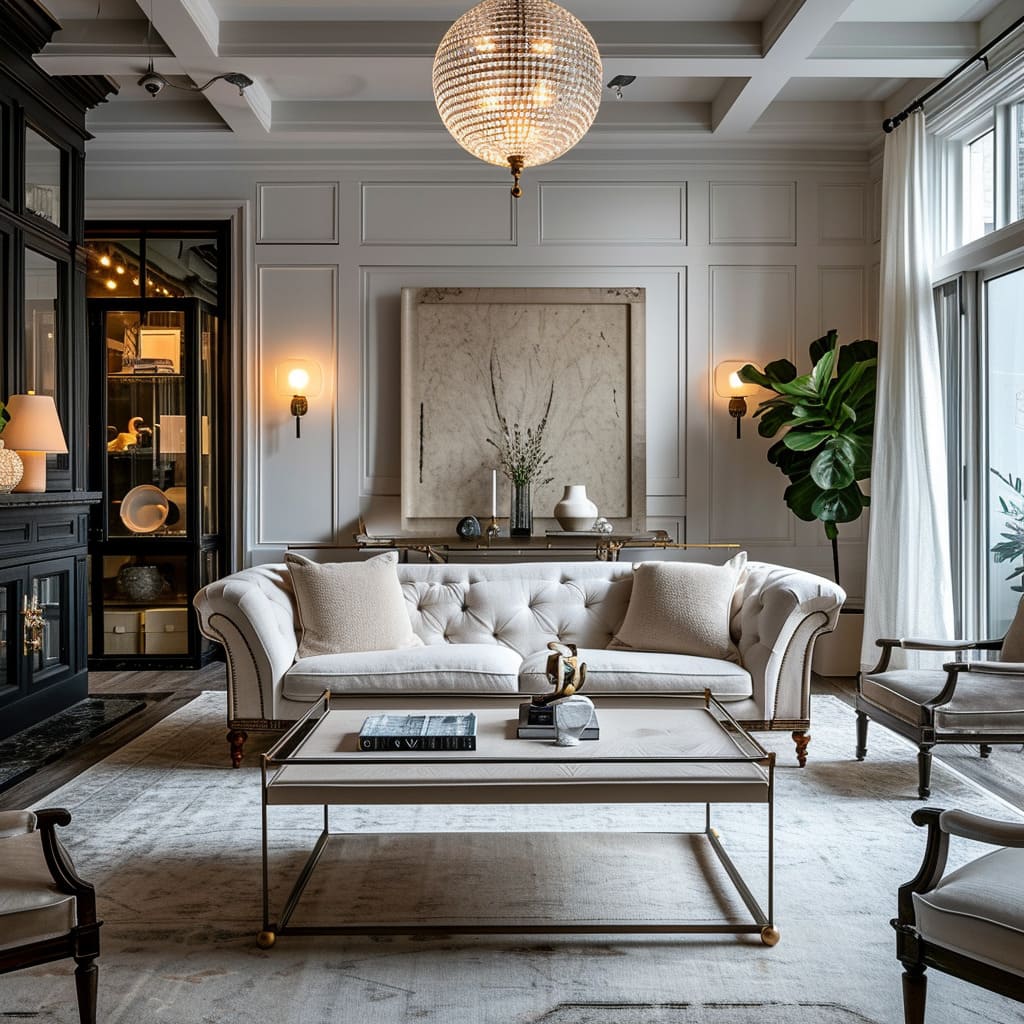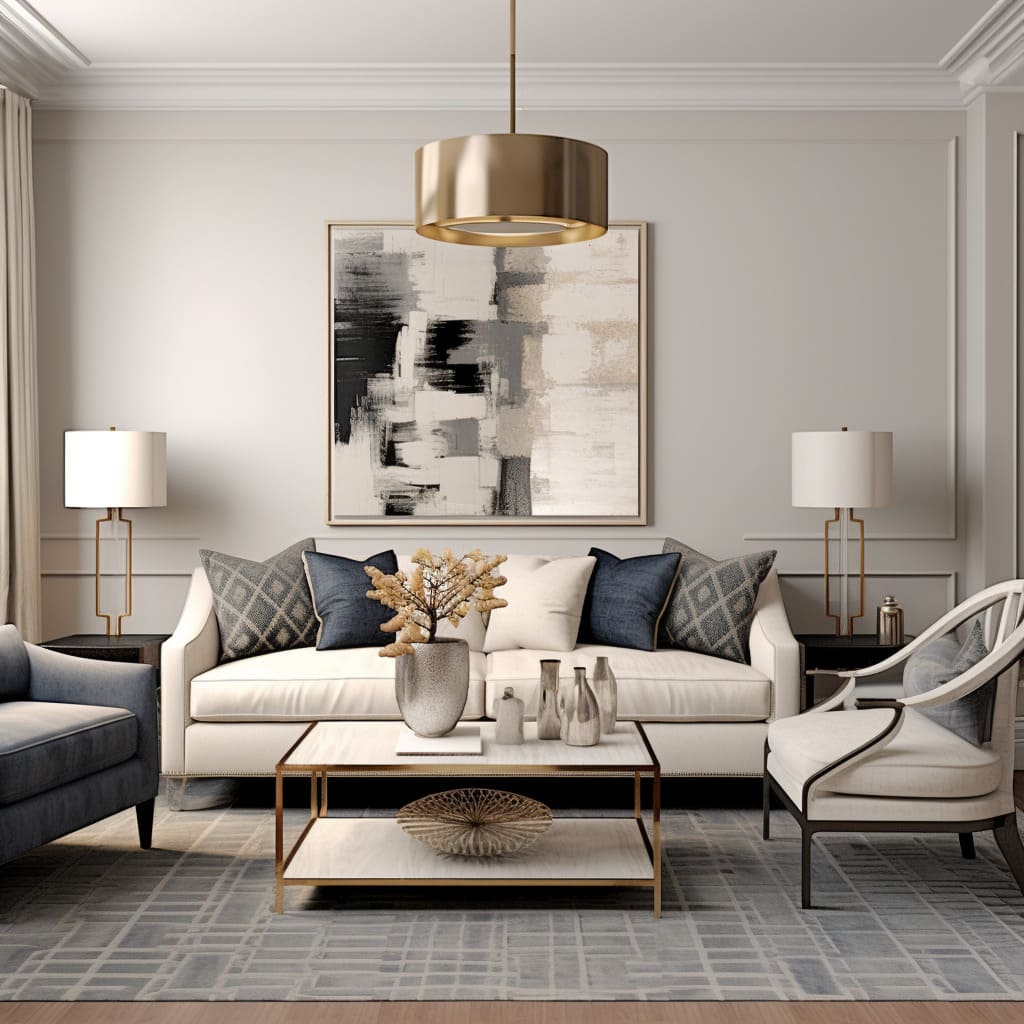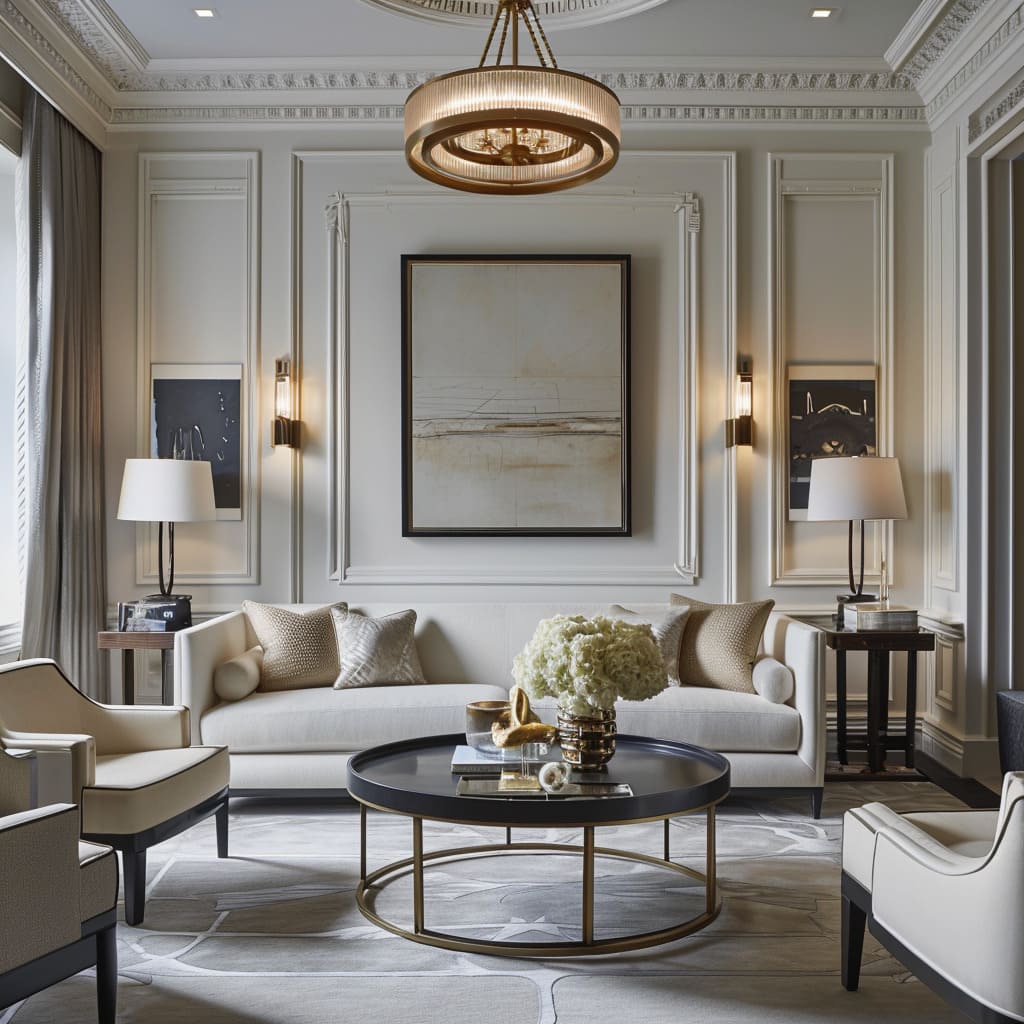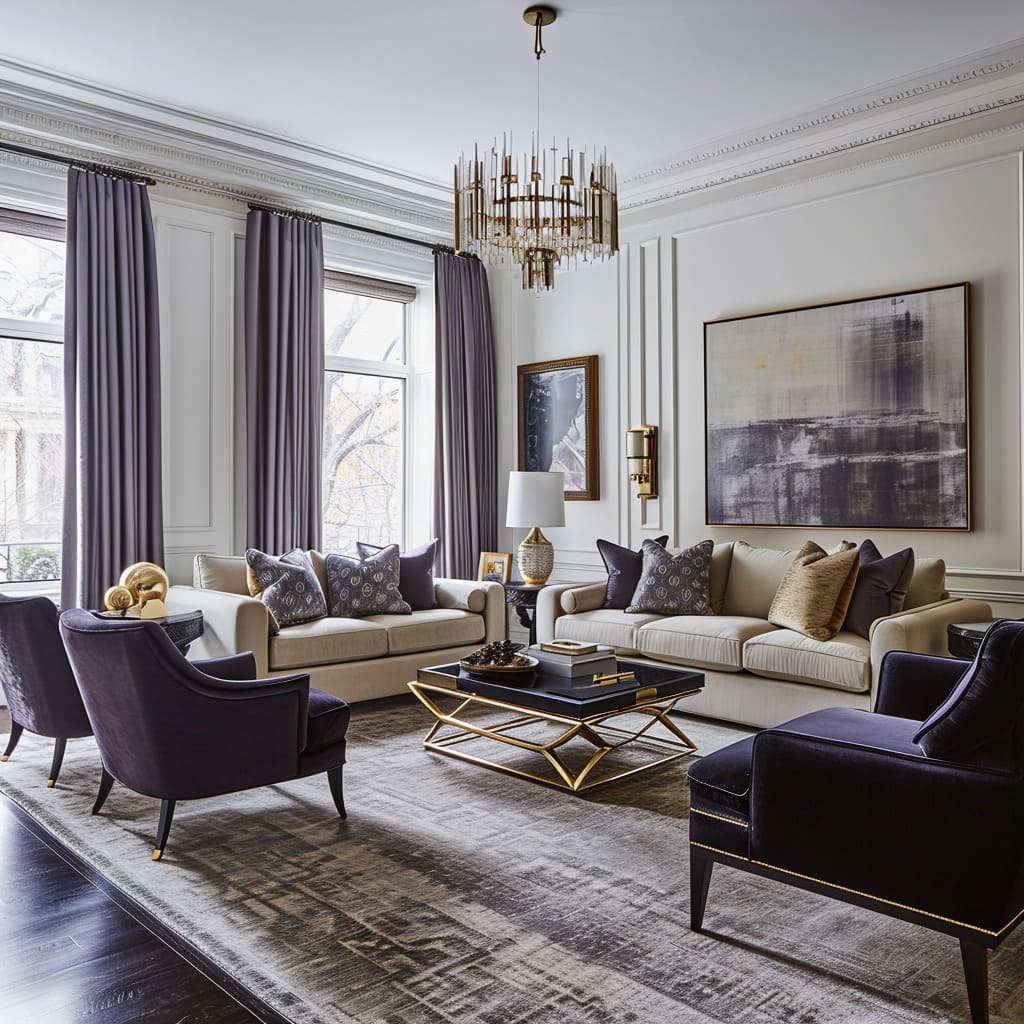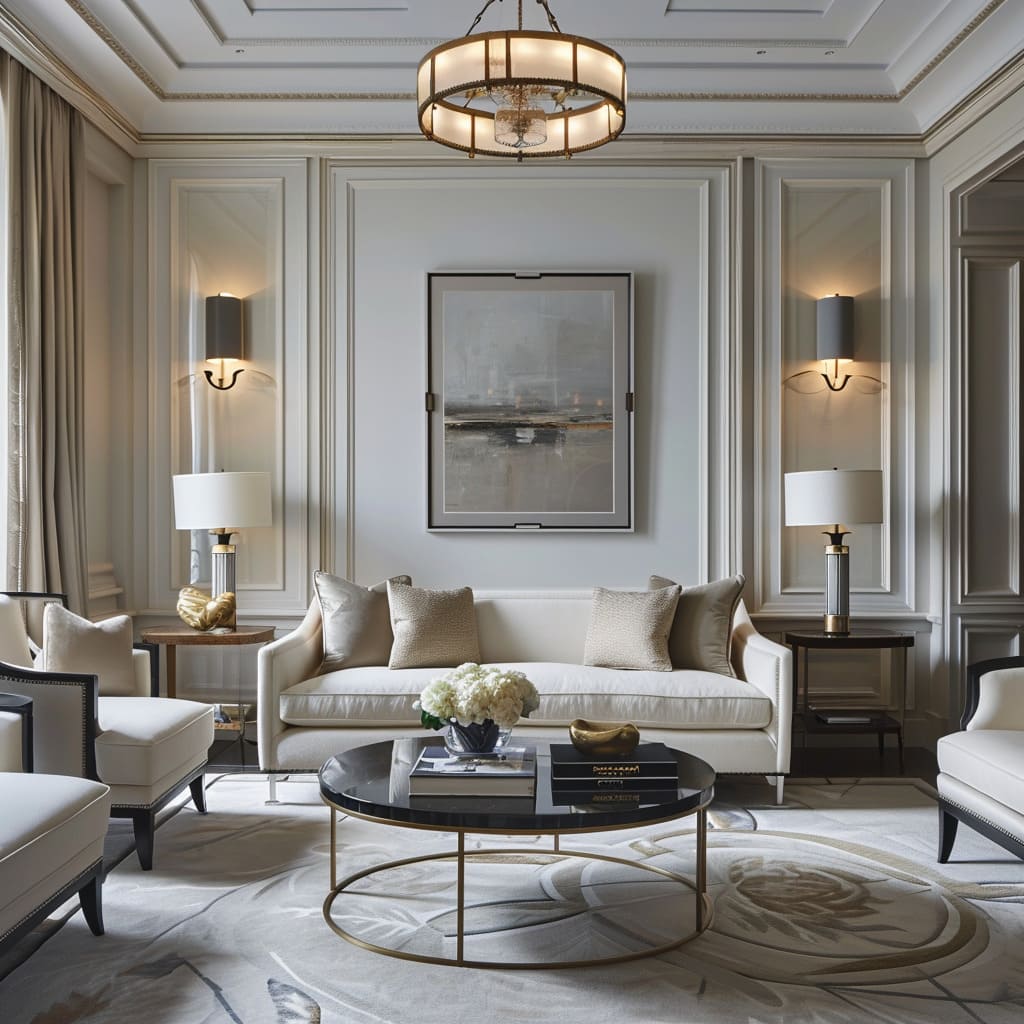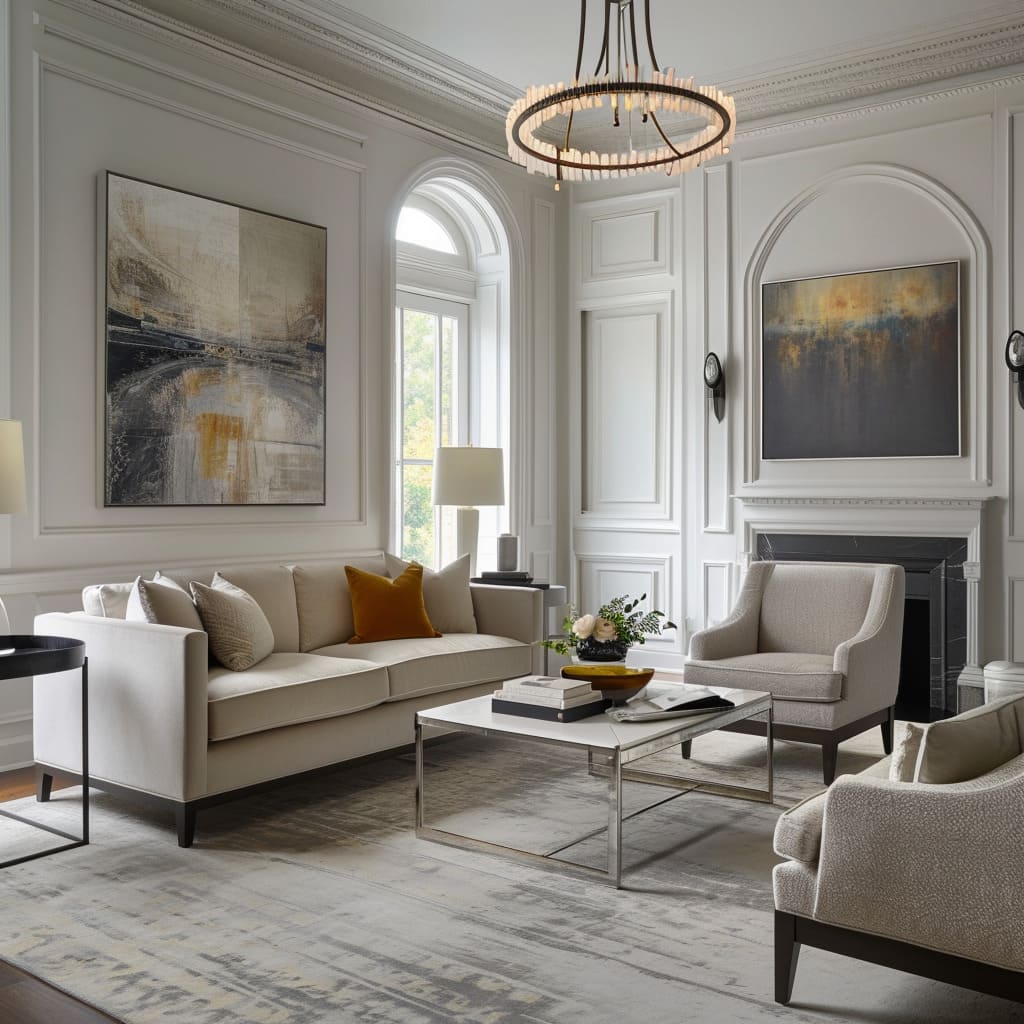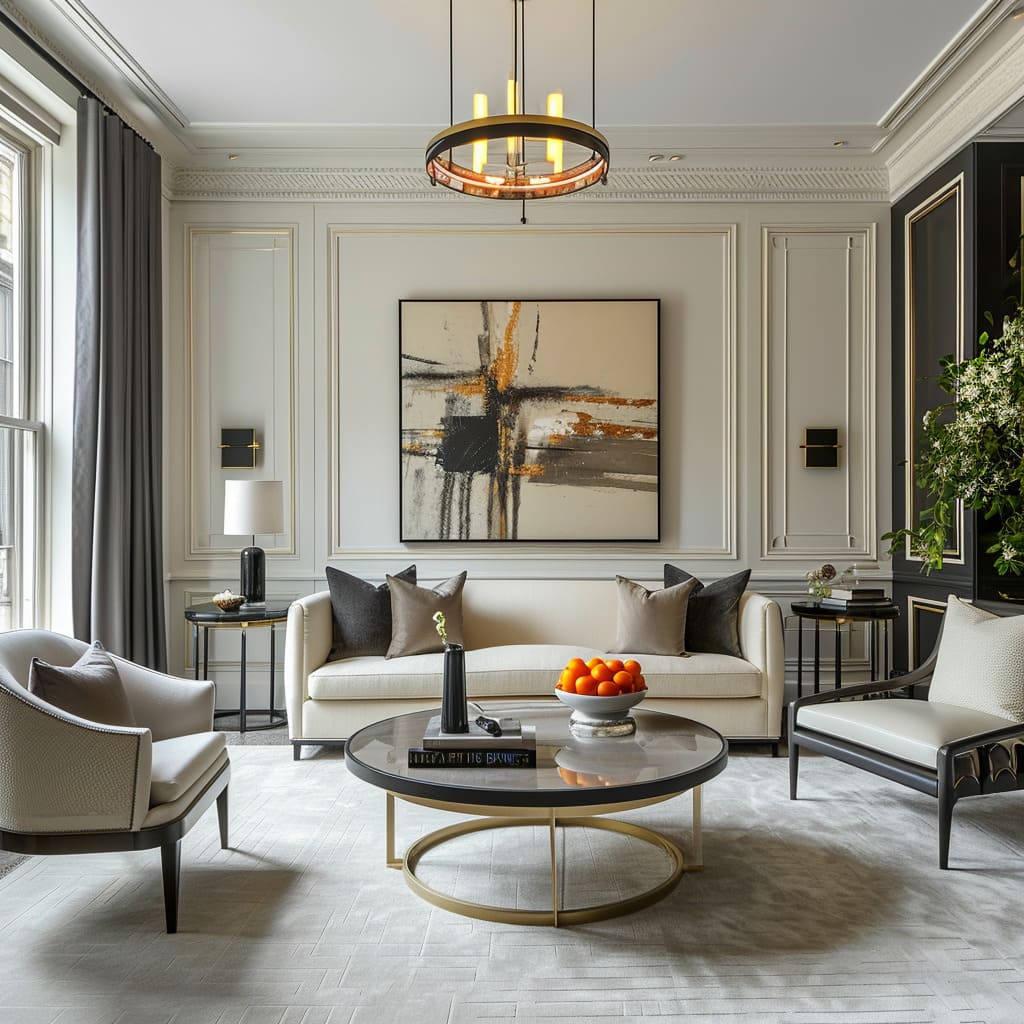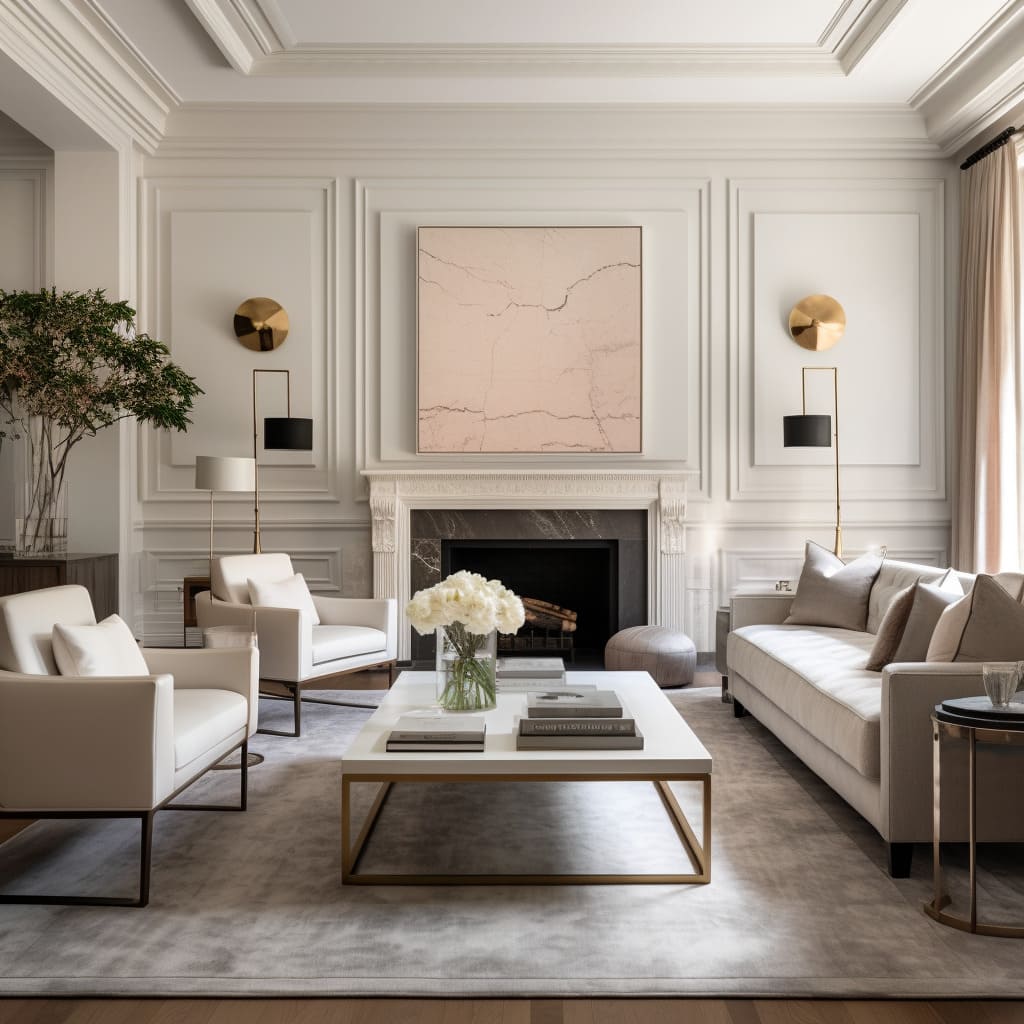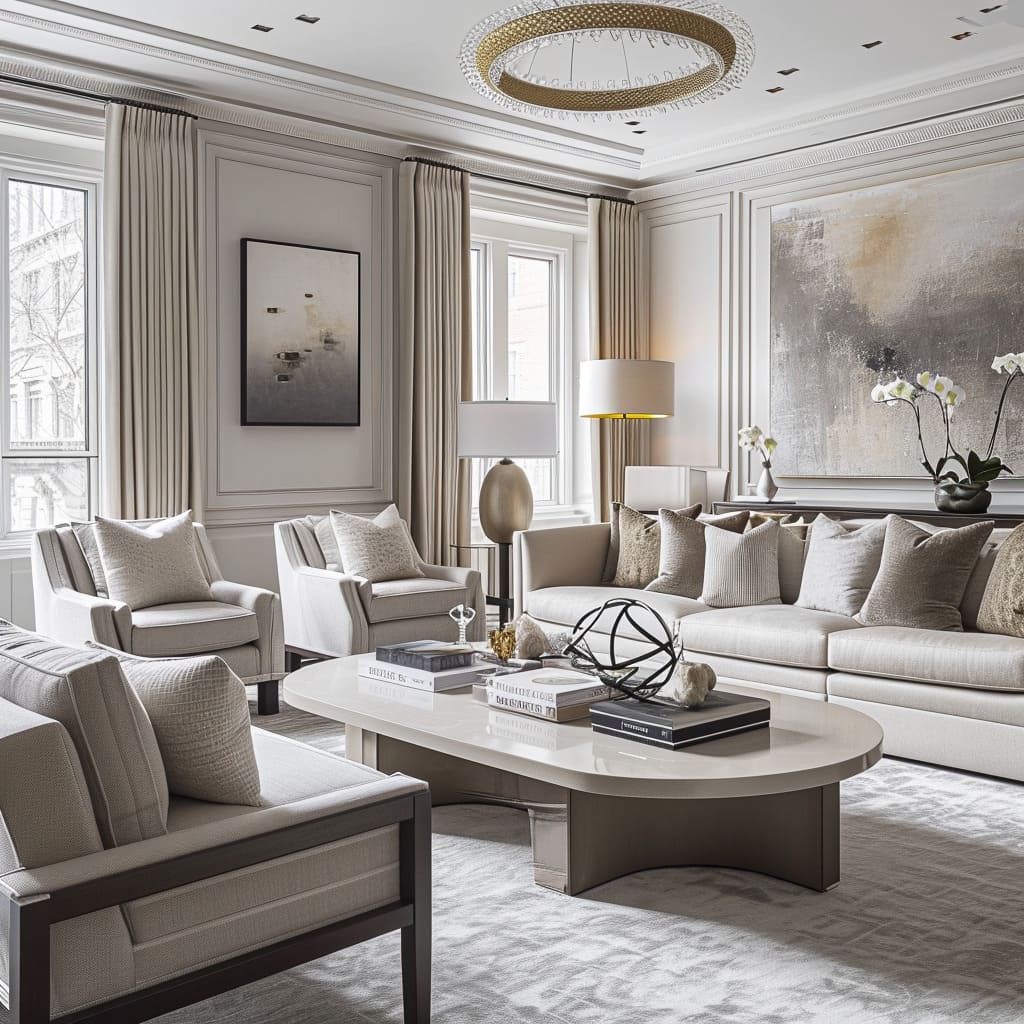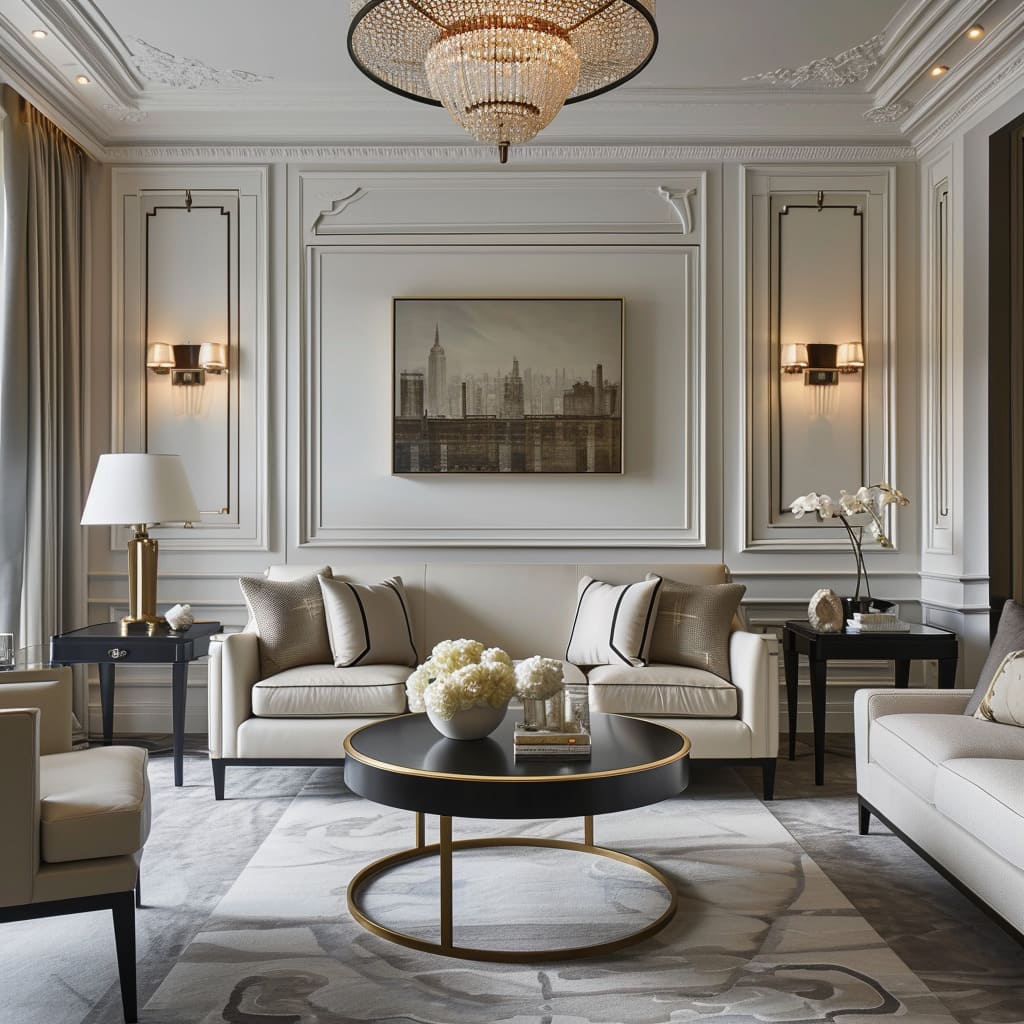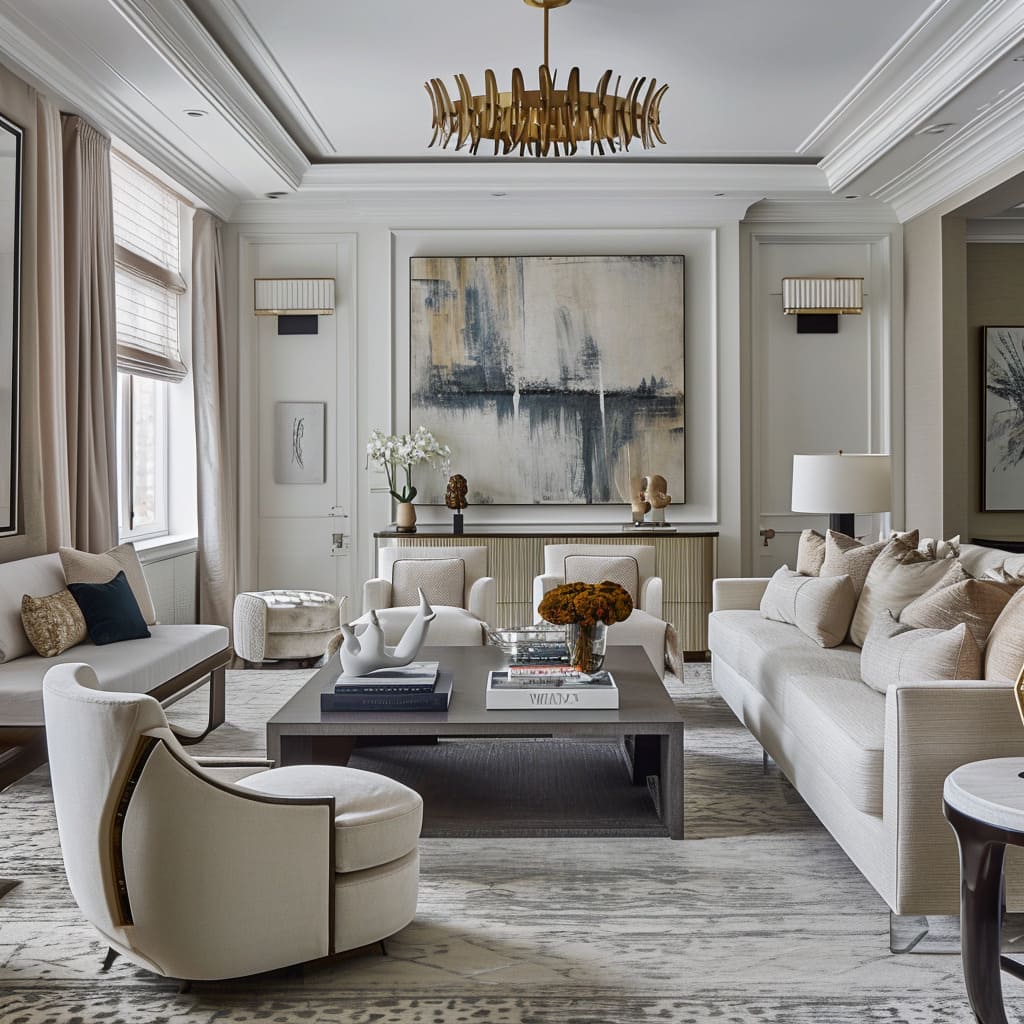The living room interior designs presented here showcase a sophisticated and cohesive Transitional style. Transitional style is characterized by a seamless blend of traditional and contemporary elements, resulting in a timeless and elegant aesthetic.
Here are the main features observed in these designs:
Neutral Color Palette
The neutral color palette is a cornerstone of Transitional design, serving as a harmonious backdrop for the blending of traditional and modern elements. It establishes an understated and calming ambiance, which is conducive to relaxation and unwinding.
This choice of colors also allows for greater flexibility in accenting with various textures and patterns without the risk of the space becoming visually overwhelming.
Luxurious Textiles and Materials
The incorporation of luxurious textiles and materials is pivotal in creating a sense of indulgence and comfort. Velvet and silk, for instance, are not only visually appealing but also invite touch, engaging more senses than sight alone.
These materials can convey opulence and quality, lifting the perceived value and sophistication of the space.
In these interiors, materials like plush wool rugs and linen draperies add layers of texture that enrich the environment. They play a dual role in both aesthetics and functionality: the rugs soften the acoustics and the draperies frame and filter the incoming light, enhancing the room’s natural rhythms and moods.
Elegant Furniture with Clean Lines
The furniture selected for these interiors demonstrates the Transitional style’s balancing act between comfort and chic. The clean lines of the sofas and chairs maintain a contemporary edge, ensuring the space does not feel outdated or overly ornate.
The simplicity of the forms also allows the craftsmanship and materials to shine through.
Sophisticated Wood and Metal Accents
Wood and metal accents introduce a contrasting texture and sheen to the softness of the textiles. The dark wood brings warmth and an organic touch, while the metal accents, especially in finishes like brass or gold, inject a modern flair and a hint of glamour.
Artwork and Accessories
Artwork personalizes a space and can act as a window into the homeowner’s tastes and interests. The abstract pieces selected for these rooms complement the color schemes and introduce a dynamic element that breaks up the uniformity of the walls.
Accessories, meanwhile, add character and can be easily changed out to update the look without a complete redesign.
These design elements also serve a practical purpose: they can direct attention, define distinct areas within the open space, and, through their placement, can influence the flow of movement within the room. This curated approach ensures that every piece has both a functional and aesthetic reason for its presence.
Lighting as a Focal Point
Lighting fixtures are not just light sources but also key elements of decor. A well-chosen chandelier or sconce can act as a piece of art in its own right.
The lighting in these rooms is deliberately chosen to complement the Transitional style, with pieces that blend classic and contemporary lines.
The practical role of lighting in creating ambiance cannot be overstated. In these rooms, the fixtures are placed to enhance the natural light during the day and to provide warm, layered lighting in the evening.
This ensures that the space is functional at all times and that the lighting contributes to the mood and atmosphere of each setting.
Architectural Details
Architectural details such as crown molding and wainscoting pay homage to the roots of traditional design. These features add depth and dimension to the walls, creating shadow lines and highlights that enrich the space.
Even when painted in light colors, they contribute to the visual interest and can elevate the perception of the room’s proportions.
Symmetry and Balance
Symmetry is a fundamental principle in design, often associated with beauty and harmony. In these living rooms, the symmetrical arrangements of furniture and decor create a sense of order and formality.
This balance is pleasing to the eye and suggests stability and calm.
Layered Rugs
The use of layered rugs over hardwood flooring accomplishes several design goals. Aesthetically, it adds texture and helps to define the seating areas as distinct zones within the larger space.
It also provides a soft transition from the architectural elements to the furnishings.
Strategic Color Contrast
The restrained use of darker colors for contrast prevents the neutral palette from becoming monotonous and adds visual depth. This contrast can draw attention to certain areas or pieces within the room, such as highlighting a particular piece of artwork or an accessory.
Cohesive Theme
A cohesive theme is essential for ensuring that a space feels intentional and curated. By maintaining a consistent use of colors, materials, and design principles across all rooms, the designer creates a unified experience that feels fluid and connected.
Each of these elements plays a critical role in the creation of a living space that is not only beautiful but also functional and comfortable. They work in concert to create interiors that are rich in detail and layered in meaning, offering an inviting atmosphere that stands the test of time.

